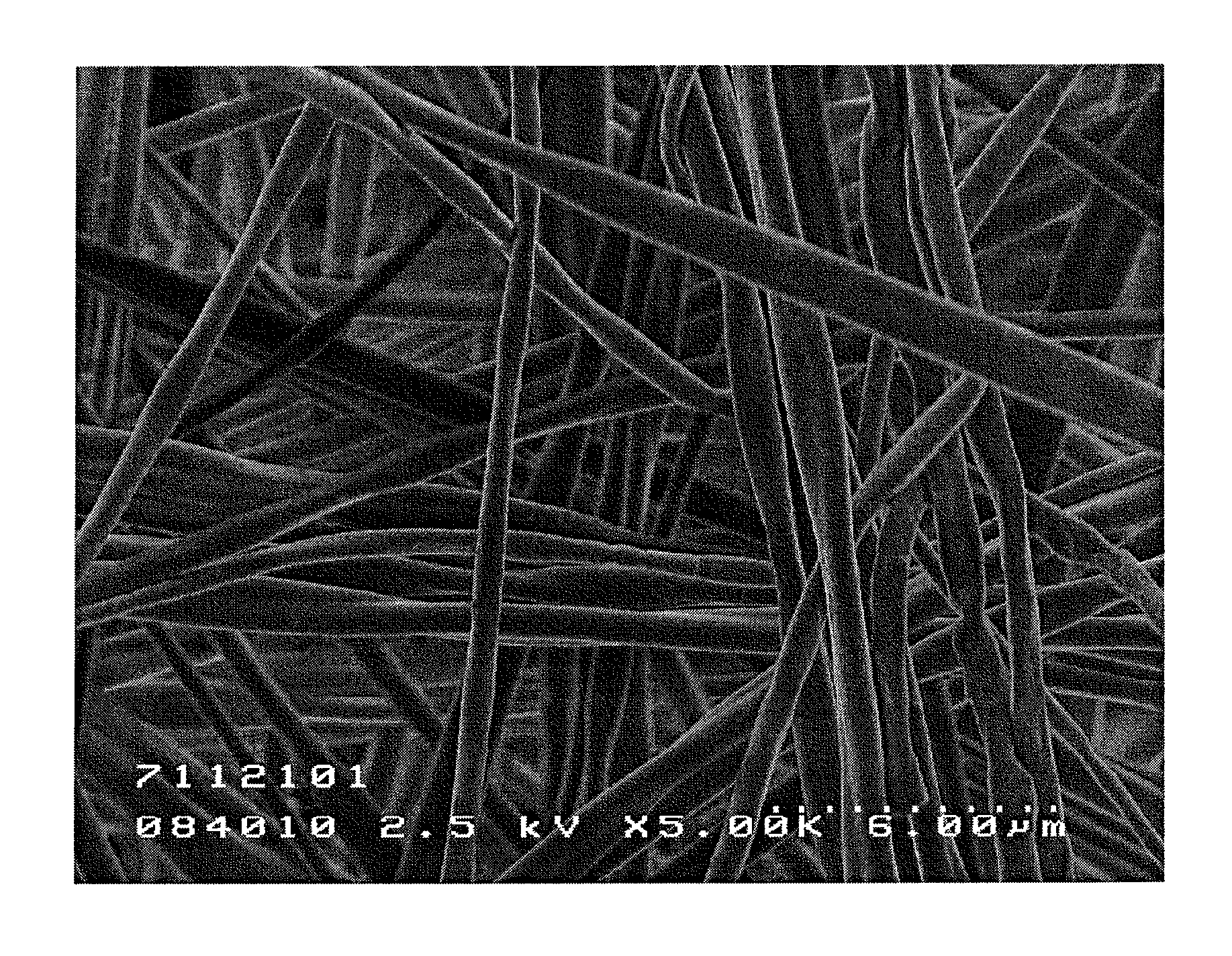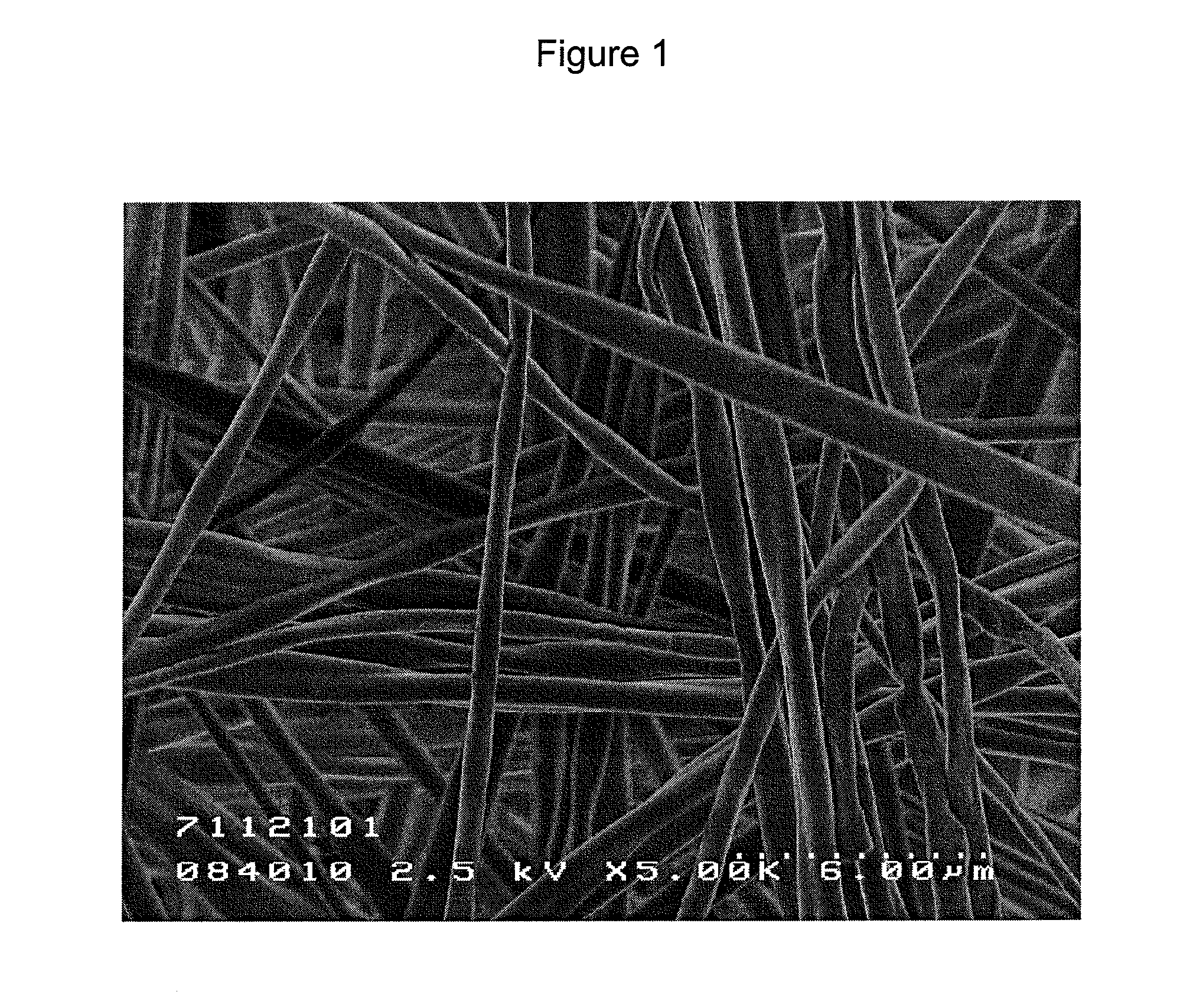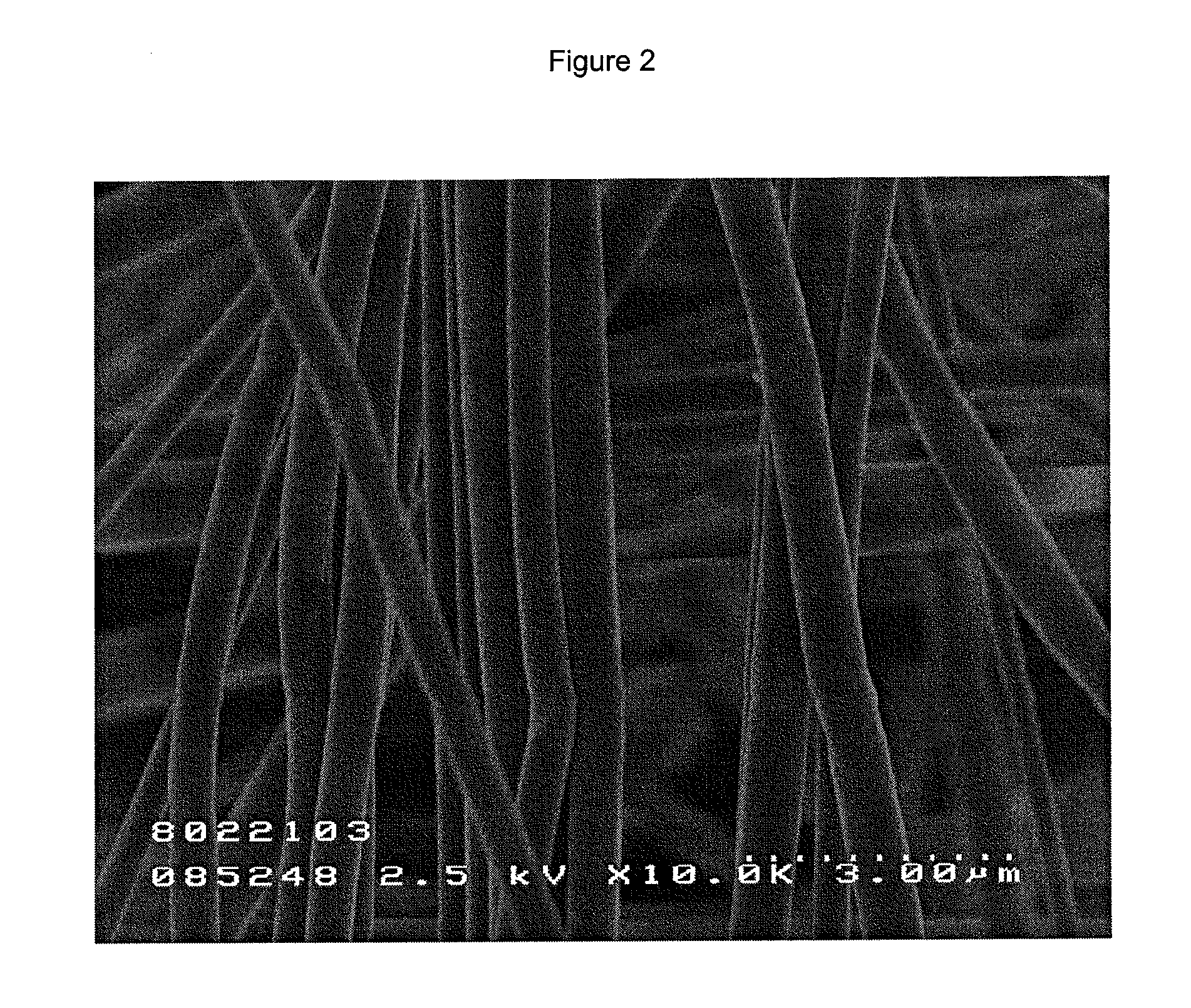Fibrous tissue sealant and method of using same
a tissue adhesive and sealant technology, applied in the field of medical adhesives, can solve the problems of limited internal application use of fibrin-based adhesives, slow curing of fibrin-based adhesives, and general inapplicability of conventional tissue adhesives to a wide range of adhesive applications
- Summary
- Abstract
- Description
- Claims
- Application Information
AI Technical Summary
Benefits of technology
Problems solved by technology
Method used
Image
Examples
example 1
Preparation of an Anhydrous Fibrous Sheet Comprising Dextran Aldehyde and Eight-Arm PEG 40K Hexadecaamine (P8-40-2)
[0174]The following Example demonstrates the preparation of an anhydrous fibrous sheet comprising a fibrous polymer containing dextran aldehyde and dextran that is impregnated with eight-arm PEG 40K hexadecaamine (P8-40-2). A solution containing dextran aldehyde and dextran was electro-blown spun into a fibrous dextran sheet, into which was added finely ground solid P8-40-2 PEG amine.
[0175]A mixture of 20 g of dextran aldehyde solution containing 25 wt % of D10-48 (Mw=10 kDa; oxidation level=48% of glucose rings cleaved to dialdehydes; prepared as described in Reagent Preparations) in water and 7 g of dextran 100K (Mw=100 kDa; Aldrich D4876) was prepared. The mixture initially gave a fluid solution but became a gel on standing at 22° C. for 30 min. The gel was stirred and warmed to 50° C. with 10 g of water to give a fluid solution which was stable over 3-4 hours; this ...
example 2
Preparation of an Anhydrous Fibrous Sheet Comprising Dextran Aldehyde and Eight-Arm PEG 10K Octaamine (P8-10-1)
[0179]The following Example demonstrates the preparation of an anhydrous fibrous sheet comprising a fibrous polymer containing dextran aldehyde and dextran that is impregnated with 8-arm PEG 10K octaamine (P8-10-1). A solution containing dextran aldehyde and dextran was electro-blown spun into a fibrous dextran sheet, into which was added finely ground solid P8-10-1 PEG amine.
[0180]A fibrous polymer containing dextran aldehyde and dextran, was prepared as described in Example 1. Finely ground 8-arm PEG 10K octaamine (P8-10-1) was prepared as described in Reagent Preparations, and 12 mg was spread evenly on a 16-mg piece of the fibrous polymer which had been stripped from its REEMAY® backing, and rubbed in. When dampened with deionized water, the fibrous sheet became a soft, tacky, elastic hydrogel in 5-10 sec.
example 3
Preparation of an Anhydrous Fibrous Sheet Comprising Dextran Aldehyde and Eight-Arm PEG 10K Octaamine (P8-10-1)
[0181]The following Example demonstrates the preparation of an anhydrous fibrous sheet comprising a fibrous polymer containing dextran aldehyde and dextran that is impregnated with 8-arm PEG 10K octaamine (P8-10-1). A solution containing dextran aldehyde and dextran was electro-blown spun into a fibrous dextran sheet, which was wetted with a solution containing the P8-10-1 PEG amine in dichloromethane.
[0182]A 52-mg (3 cm×3 cm) piece of the fibrous dextran aldehyde sheet, prepared as described in Example 1, which had been stripped from its REEMAY® backing, was placed in an aluminum weighing pan and wetted evenly dropwise with 0.37 g of a solution containing 1.00 g of P8-10-1 in 5 mL (6.5 g) of dichloromethane (13 wt % P8-10-1). The damp sheet was quickly dried under a nitrogen stream. About 50 mg of P8-10-1 was deposited on the fibers (CHO:NH2=3.8). The originally soft, flex...
PUM
| Property | Measurement | Unit |
|---|---|---|
| aspect ratio | aaaaa | aaaaa |
| weight-average molecular weight | aaaaa | aaaaa |
| weight-average molecular weight | aaaaa | aaaaa |
Abstract
Description
Claims
Application Information
 Login to View More
Login to View More - R&D
- Intellectual Property
- Life Sciences
- Materials
- Tech Scout
- Unparalleled Data Quality
- Higher Quality Content
- 60% Fewer Hallucinations
Browse by: Latest US Patents, China's latest patents, Technical Efficacy Thesaurus, Application Domain, Technology Topic, Popular Technical Reports.
© 2025 PatSnap. All rights reserved.Legal|Privacy policy|Modern Slavery Act Transparency Statement|Sitemap|About US| Contact US: help@patsnap.com



